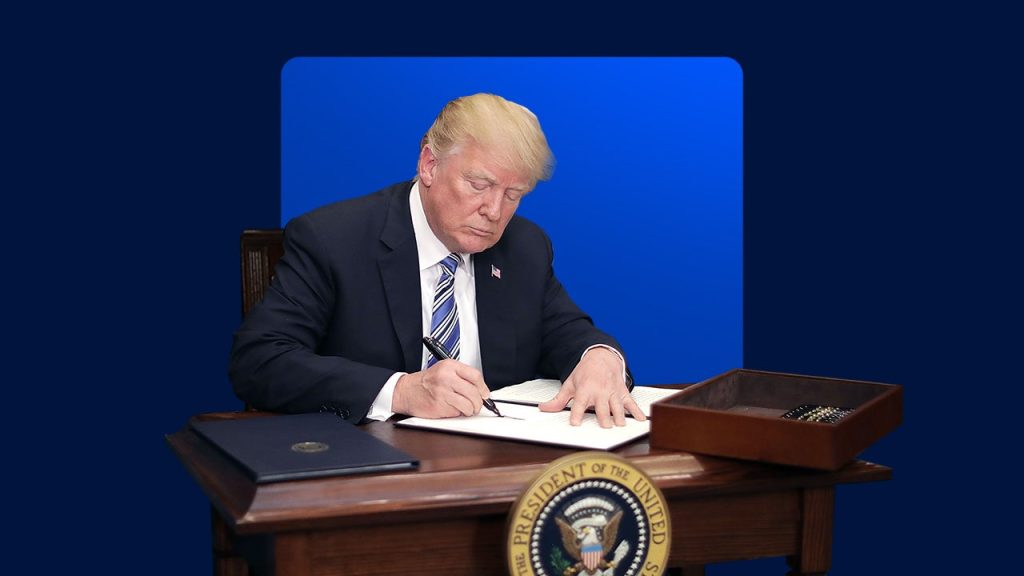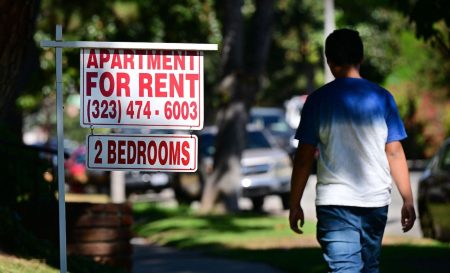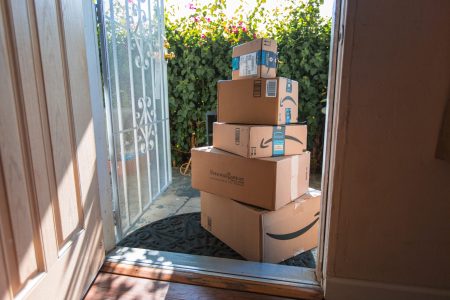Many of us haven’t had to ponder the nuance of tariffs since 9th-grade history class. That is until this election season when President Trump proposed a 10 to 20 percent tariff on all goods imported into America. The president has since suggested various tariff amounts, from a 60 percent tariff on products from China to a 200 percent tax on John Deere imports (yes, the tractor company).
However, on November 25, 2024, Trump stated his plan loud and clear in a post on Truth Social. His plans include an inauguration day executive order to implement a 25 percent tariff on all products coming into the country, plus an additional 10 percent tariff on Chinese products.
Unsurprisingly, internet searches for “tariffs,” “what is a tariff,” and “what is a tariff and who pays it” skyrocketed over 5,000 percent following the post.
A tariff is a tax on goods brought into the U.S. The tariffs collected by Customs and Border Protection agents are directed to the U.S. Treasury. The U.S. controls which countries and goods it imposes import tariffs on and what percentage it charges. With Mexico and Canada being two of America’s major suppliers of imported cars, these tariffs can directly impact the cost of purchasing, maintaining and insuring a vehicle for most drivers.
How will Trump’s tariffs affect auto insurance?
“As with so much involving President Trump’s plans, threats are one thing, and the details of implementation are another,” says Mark Hamrick, Bankrate’s senior economic analyst. These tariffs aren’t a sure thing. “Given that economists broadly believe these tariffs risk setting off a fresh wave of inflation, it might well be that the Trump team is having second thoughts about the scale of their plans.” That said, understanding how tariffs could potentially impact your auto insurance can help you plan ahead.
Over the past two years, drivers have felt the financial squeeze of soaring insurance rates, with the average cost of full coverage car insurance increasing by 31 percent since January 2023. While inflation played its role, car insurance rates outpaced inflation due, in part, to the cost of vehicle parts and labor.
When the cost of repairing and replacing vehicles increases, these costs trickle down to insurance companies, who pass them on to policyholders. President-elect Trump has indicated that this tariff could be placed on all goods entering the U.S. from Mexico and Canada, impacting auto insurance costs in a few ways:
- More expensive vehicles and repairs: First and foremost, tariffs will increase the cost of goods imported into the U.S., which includes most vehicles and vehicle parts. If auto insurance companies are paying out more to repair and replace vehicles after covered claims, they will pass these costs along to consumers in the form of higher premiums.
- Shipping delays: To circumvent tariffs on imported goods, companies look for new suppliers, which can change the direction of global trade flows. This all takes time, and disruptions in supply chains cause shipping delays. The laws of supply and demand take over, making goods and products that are hard to obtain cost more.
- Delays in repairs: As we saw during the supply chain issues from the COVID-19 pandemic, vehicle part shortages can delay car repairs. This domino effect causes a shortage of rental cars and pushes drivers past the rental window allowed by carriers. As a result, drivers may be forced to pay out-of-pocket for rental cars for a longer period of time and likely at a higher rate.
- Increase in totaled vehicles: When a car’s repair cost exceeds the actual cash value (ACV) of the vehicle, insurance carriers declare the car totaled. Drivers will receive a claim payout for the ACV minus their deductible. Additional tariffs could cause vehicles to be deemed total losses at a higher rate, causing drivers to buy new cars sooner than anticipated.
In terms of specific coverage types, tariffs implemented on medical equipment, medicine and anything involving health care may impact:
Tariffs that increase the cost of vehicle parts, technician equipment and anything used for vehicle maintenance or repairs may impact:
Tariffs have been shown to increase the cost of vehicles and parts
In 2018, President Trump implemented a 25 percent tariff on imported steel and a 10 percent tariff on imported aluminum, kicking off a trade war with various countries. Canada then imposed its own import tariff on steel and aluminum. A little over a year later, the United States-Mexico-Canada Agreement (USMCA) removed the steel and aluminum tariff. Currently, Mexico and Canada are regarded as a free trade zone, with very few tariffs and trade barriers between the three countries.
However, from 2018 to 2019, when the steel and aluminum tariffs were active, Ford and General Motors reported losses of $1 billion each — $700 for each car produced during that time.
Data collected by the Tax Foundations shows that tariffs imposed by Trump in 2018 and continued, and in some cases increased, by President Biden, are already costing Americans an additional $200 to $300 per household. “Depending on the details of implementation,” says Hamrick, “makers of autos and auto parts would likely be forced to pass along cost increases, to be reflected in higher sticker prices.”
We learned from the early days of the pandemic about the dependence of American consumers and businesses on global supply chains. With inflation topping the list of economic issues in the 2024 election, consumers are already weary of elevated prices. The last thing they want is further constraint of purchasing power which would be one of the impacts of widely applied tariffs.
— Mark Hamrick, Bankrate senior economic analyst
Which vehicles will be most affected by tariffs?
Since there is no such thing as a 100 percent American-made car, Trump’s tariff plan could impact all new U.S. vehicles. However, some manufacturers will be impacted by tariffs more than others. Stellantis — which makes vehicles like Chrysler, Dodge and Jeep — and Volkswagen AG would likely take the most significant financial hit since they import about 40 percent of their U.S. vehicles. Ford imports about 25 percent and GM about 30 percent of its vehicles.
Tesla would be impacted the least out of all the manufacturers, with between 65-75 percent of its vehicles being made in the U.S. and about 20 percent in Mexico.
Based on the annual American Automobile Labeling Act (AALA) Reports, drivers in the market for budget vehicles may feel the effects of tariffs on auto prices the most. Below are the assembly and part locations of Kelly Blue Book’s 10 cheapest cars of 2025.
| Vehicle | Final assembly location | Percent content U.S./Canada | Percent content other countries |
|---|---|---|---|
| 2024 Mitsubishi Mirage | Thailand | 0% | 91% Thailand |
| 2025 Nissan Versa | Mexico | 15% | 70% Mexico |
| 2024 Kia Forte | Mexico | 10% | 35% Korea |
| 2025 Hyundai Venue | Korea | 1% | 90% Korea |
| 2025 Chevrolet Trax | South Korea | 2% | 48% Korea23% Mexico |
| 2025 Kia Soul | South Korea | 1% | 90% Korea |
| 2025 Nissan Sentra | Mexico | 10% | 75% Mexico |
| 2025 Hyundai Elantra | Korea | 0% | 90% Korea |
| 2025 Volkswagen Jetta | Mexico | 21% | 33% Mexico |
| 2025 Toyota Corolla | U.S. | 55% | 25% Japan |
When will tariffs start affecting my car insurance premiums?
Policyholders looking for a silver lining can find it in the fact that new tariff changes probably won’t impact car insurance rates this year. According to Dr. Robert Hartwig, clinical associate professor of finance and director of the Risk and Uncertainty Management Center in the Moore School of Business at the University of South Carolina, if tariffs are imposed, auto policyholders will experience a lag between when they go into effect and when they see them reflected on their auto insurance bill.
Insurance is reactionary, and carriers need time to see if and when the tariffs impact claims. “Over time, the tariffs could be expected to push up average claim severities,” says Dr. Hartwig. “Once that trend is observed by insurers, it’ll be factored into rates. That means there will be minimal impact on rates in 2025 and potentially only a modest influence through the first half of 2026.”
I’d expect more of an impact as policies renew during the second half of 2026 into 2027. We observed a similar pattern with inflation a few years ago. Personal auto rate changes peaked in April 2024, approximately two years after inflation itself (as measured by the CPI) peaked in 2022.
— Dr. Robert Harwig, CPCU, Director of the Risk and Uncertainty Management Center, University of South Carolina Moore School of Business
Bottom Line
In the end, it is a waiting game. Even if President Trump takes executive action to enact tariffs on Canada, Mexico and China on day one of his second term, it could take a long time before they go into effect. Tariff negotiations could increase or decrease the tax rate, and it’s possible for any changes in tariffs to be repealed down the line. Working toward building an emergency fund and prioritizing necessary vehicle repairs or purchases may be a good use of time while waiting to see what happens.
Read the full article here












